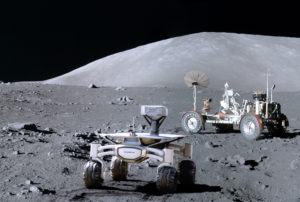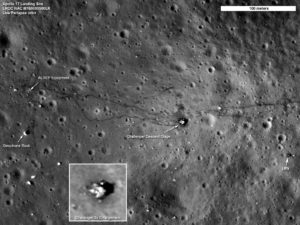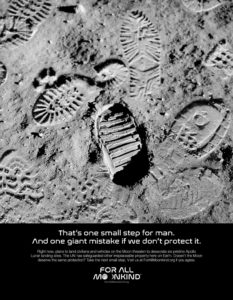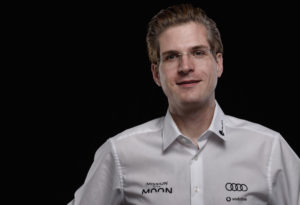With Mission to the Moon, PTScientists are taking Europe to the Moon. This much anticipated project will be the first private mission to land on the Moon. No pressure then.
The PTScientists story began nine years ago, when a team of like-minded engineers entered the Google Lunar XPrize, a competition sponsored by the tech giant, that challenged competitors to land a spacecraft on the lunar surface, to deploy lunar rovers, drive 500 metres and relay HD images back to Earth. Since then, their ambitions grew and the team began developing a mission with scientific, technology and cultural elements, bringing in non-space partners Audi and Vodafone as Key Technology Partners on the mission. The GLXP ended earlier this year with no-one claiming the grand prize, but PTScientists are as dedicated as ever to their goal of creating vital lunar infrastructure

As part of their mission, the Team is set to return to the landing site of Apollo 17, the last time humans walked on the Moon which launched on December 7th, 1972. PTScientists are interested in how the Apollo hardware has stood the test of time on the Moon. Using their Audi lunar quattro rovers they aim to get the first look at the Apollo Lunar Roving Vehicle since it was left by Apollo 17 astronauts Gene Cernan and Harrison Schmitt, and send high-definition images back to Earth.
This is a thrilling prospect for the space archaeology community. However, things aren’t quite that straightforward, as Robert Boehme, CEO and Founder of PTScientists explained to Helen Jameson, Editor-in-Chief, SpaceWatch.Global.
How aware is the PTScientists team about space archaeology and what is your perspective on the preservation of historical sites in space?
I founded the project nine years ago when we came together as a group of scientists and engineers that wanted to participate in the Google Lunar XPrize challenge to send a robot to the Moon. Something that I am still proud of today is the fact that in our first public presentation we were already talking about going back to visit an Apollo site with two robots. The point I want to make is that this is an idea that we had in the very early days.
We started to speak with the German Space Agency, DLR, a little over a year after our establishment, and we looked at all sorts of different things with them such as landing trajectories and target sites for the Mission. We worked very closely with the Institute of Planetary Research, which is contracted by NASA. At that point, the Lunar Reconnaissance Orbiter (LRO) was in lunar orbit, collecting all of these highly detailed terrain maps. So we reached out to them to ask them whether they could help us to pick a good spot on the Moon where it would be ‘easy’ to land. We didn’t care where it was. So, DLR did some in-depth research on all of the available data that came back from the LRO. They found some risk factors such as large craters and high concentrations of rock which could potentially break the landing legs. There are a lot of factors that go into finding the ideal landing site. The end result was that they determined that the area of Apollo 17 is the most suitable because of the very good available terrain data and the relatively low (on average) number of rocks there.
The cool thing is that Apollo 17 was the mission was focused on geology, so they created very good maps as part of the mission and very good photography. NASA had also chosen the Apollo 17 site to have an in-depth 3D scan flyover with the LRO, so it is a perfectly mapped out area. This was very positive for us, as when you’re doing things for the first time, it’s always good to be sure.
At the same time, we were working with the robotics department at DLR and focusing on the instruments that we could take with us. They suggested that we carry out research with the cameras that we are developing together and it was decided that we would analyse the Lunar Roving Vehicle. Funnily enough, the very same suggestion came from NASA a couple of years later.

As part of the Google Lunar XPrize initiative, we realised that there were a lot of unanswered questions about re-visiting the Apollo 17 site. We were very conscious of rules and guidelines and we wanted to know what restrictions and restraints we would be facing. So, the XPrize organised a workshop with NASA at the Lunar Science Institute at NASA Ames, which was a fantastic experience.
Back then, NASA was just starting to create the documents that have become the Lunar Heritage Protection Guidelines. We met with the team that worked on these guidelines so, if we found something of heritage value, we would have something to follow. For me, it was very important because it was the first time we really understood the value of heritage protection. We actually got to meet with the scientists that really care about it. I can remember a discussion where they explained to us the negative effects of simply flying over the landing site during the approach because of the contamination of fuel or touching down too closely in an area where you throw up so much dust that, due to the low gravity of the Moon, it could carry all the way to the landing site. You sit there as an engineer, and you know your own field well but then you realise suddenly that this is something you had never ever considered!
Whilst we were there, the NASA scientists encouraged us to analyse the original Lunar Roving Vehicles if we landed near the sites of Apollo 15, 16 or 17. These rovers consist of lots of materials such as aluminium, plastic, duck tape, nylon – a selection of materials that you do not find on the landing module itself. There are so many questions to find answers to such as how much dust is on the vehicle? What is the integrity of the vehicle? Has it collapsed or is it still standing? How have the materials survived? It was at this point that we decided to fix the mission profile for the Apollo 17 site and to make it a scientific exploration target to visit the Lunar Roving Vehicle. That was how we were introduced to space archaeology. It was something that we had to pick up and learn, to understand on many levels, and now it has become part of our DNA over the past nine years.
Can you tell us about how your partnership with For All Moonkind came about? They hold PTScientists up as a great example of how a mission to the Moon should be carefully planned. Tell us more about how you came to work together.
 I first learned about For All Moonkind when I noticed articles that were popping up on the initiative. There was one that I read in a UK magazine and I immediately realised that this was a very worthwhile and important initiative – and cleverly done. We immediately sent them a message. We started discussions about how we should approach what we are trying to achieve and they saw how seriously we are taking the preservation of the Apollo 17 site.
I first learned about For All Moonkind when I noticed articles that were popping up on the initiative. There was one that I read in a UK magazine and I immediately realised that this was a very worthwhile and important initiative – and cleverly done. We immediately sent them a message. We started discussions about how we should approach what we are trying to achieve and they saw how seriously we are taking the preservation of the Apollo 17 site.
For me, it was great to see this initiative emerge and grow and we are great supporters. Two of our team members are on their Advisory Boards. The point is that, from our level as a private company, our mission completely follows the NASA guidelines. However, no one else has to commit to follow them. It is a sticky situation. Very sadly, the NASA working group no longer exists and so the guidelines are not updated. Therefore, it is so good that For All Moonkind has come along and is building up this momentum and interest and is helping us to get this discussion going again.
From our perspective, we have this baseline set of information but we really need to get in touch with a heritage professionals on a workable basis so we have an interface that we can put the difficult questions to. Some of the questions we have are really detailed ones. Within our mission planning there is a section called “waypoint planning”. We want to approach a certain area so that we can take close-up images of the Apollo 17 Lunar Rover but we will have to travel quite a distance to get there, and there will probably be a number of tracks and objects in our path which are perhaps not protected in the heritage guidelines. We need someone to help us to figure out what these tracks are and to give us an estimation on the best path to cross them without disturbing them too much. That knowledge would be very helpful. We can only do so much, so we need to have an entity that can link us up with the right people who can help us to get things organised in a way that is most beneficial to all.
Aside from the Lunar Rover, what kind of artefacts will you be looking for?
There are dozens of documented smaller items that are really interesting to the scientific community. For example, the rocks that were collected during Apollo 17 were placed into small plastic bags. There are some documented places far out of the landing zone where these bags were dropped and have been lying around for 50 years. So, actually it is really exciting to know what has happened to these plastic bags. Are they still there? Are they a pile of dust? It is so exciting for chemical science and of great value to look at how things have behaved.
You are going to do something that will inform the space archaeology community in a way that has never been achieved before. Do you think the use of your Lunar Rovers will be a big development for the space archaeology community and one that could be used again in the future, specifically for archaeological missions?
Totally. This is something that we are very proud of. There are many scientists that care about preserving the past but there are some that really want to dismantle everything. I recently received an email from a team of scientists asking us to take some manipulative hardware with us which means that you have equipment that will carry out science by manipulating the object: drilling holes, using a robotic arm to lift it up and look underneath it, etc. Our clear message on this mission was that we will not do any manipulation. We will only look at things, not disturb them. Everything we approach will be done so in a non-manipulative way. This is central to our mission.
We have developed a set of special instruments to give us lots of information without touching things. We have a very special camera. We have a miniaturised version of the MastCam, based on the camera that was used on the Mars Curiosity Rover. This has six different infrared filter wheels which are in front of a black and white camera sensor that has been optimised so it is more detailed. The cool thing about it is that you can get a lot of information about the state of decay and material composition. We can actually look at the soil and tell you if the soil is iron or silicon-rich and you can look at different materials and examine whether there is dust on them, how much dust and whether there are scratches, for example. This is an instrument that can be used for other scientific experiments as well. The optical sensor that we use is a science-grade sensor.
Do you think that generally, within the space industry, there is enough awareness of the importance of these sites or objects of significance?
It’s hard to answer because we are, at present, the only ones going back to a relevant site there. All other entities wouldn’t care so much at the moment but that doesn’t mean that they won’t care. When we started out, exploring Apollo 17 wasn’t our aim but it has become part of our journey. Even the vector that we fly in affects the landing site because of the fuel exhaust and that is the reason why we have a special offset vector so it is impossible for us to land on the landing site. It would be impossible for any of our fuel to be transported onto the landing site. I think it really needs entities like For All Moonkind to create this kind of awareness. I think that commercial companies would tend to forget this. Right now, it’s not a mandatory thing.
Let’s say that if the space business works the way we want it to work and people can go back to space regularly, a company could potentially say that they are going to collect artefacts from Apollo and sell them on eBay. There must be a legal way to forbid this. This must be addressed.
Many people think of using the Moon as a base for infrastructure purposes. Our mission is to do something in space which other missions can develop. We have also talked about putting a satellite into lunar orbit. However, there is a reason why we haven’t built this into our concept because there is a big unanswered question: How do you get rid of the satellite once its lifetime ends? On Earth, it is easy as you can burn it up in the atmosphere but on the Moon there is no atmosphere. If a satellite in lunar orbit goes out of control, it could land anywhere on the Moon and if the fuel runs out there is no such thing as a graveyard orbit. That is a big issue for the Moon in the future as it could damage some important archaeological sites. For any companies that are discussing this, I would bet that they have not given a thought to the archaeology potential that exists on the Moon. They would say that it’s not their problem. But it is their problem and it has to be solved before they start doing something there.

When do you hope to launch?
We are hoping to launch in 2019 – which is also the year of the 50th anniversary of Apollo 11 and the first human footsteps on the Moon. This is a happy coincidence – the main thing for us is that we need this development time. We decided that the most important criteria for our team is to have a successful mission. I think there are still some other projects out there that want to push to launch this year, and let’s say they do. The problem is that their mission profile will be so risky that the chances of failure are so high with the chance of the spacecraft getting lost on the way to the Moon, the chance that the launch may fail or that the landing fails, for example. We see ourselves visiting Apollo 17 towards the tail end of 2019.
SpaceWatch.Global thanks Robert Boehme, CEO of PTScientists for the interview.
 SpaceWatch.Global An independent perspective on space
SpaceWatch.Global An independent perspective on space

